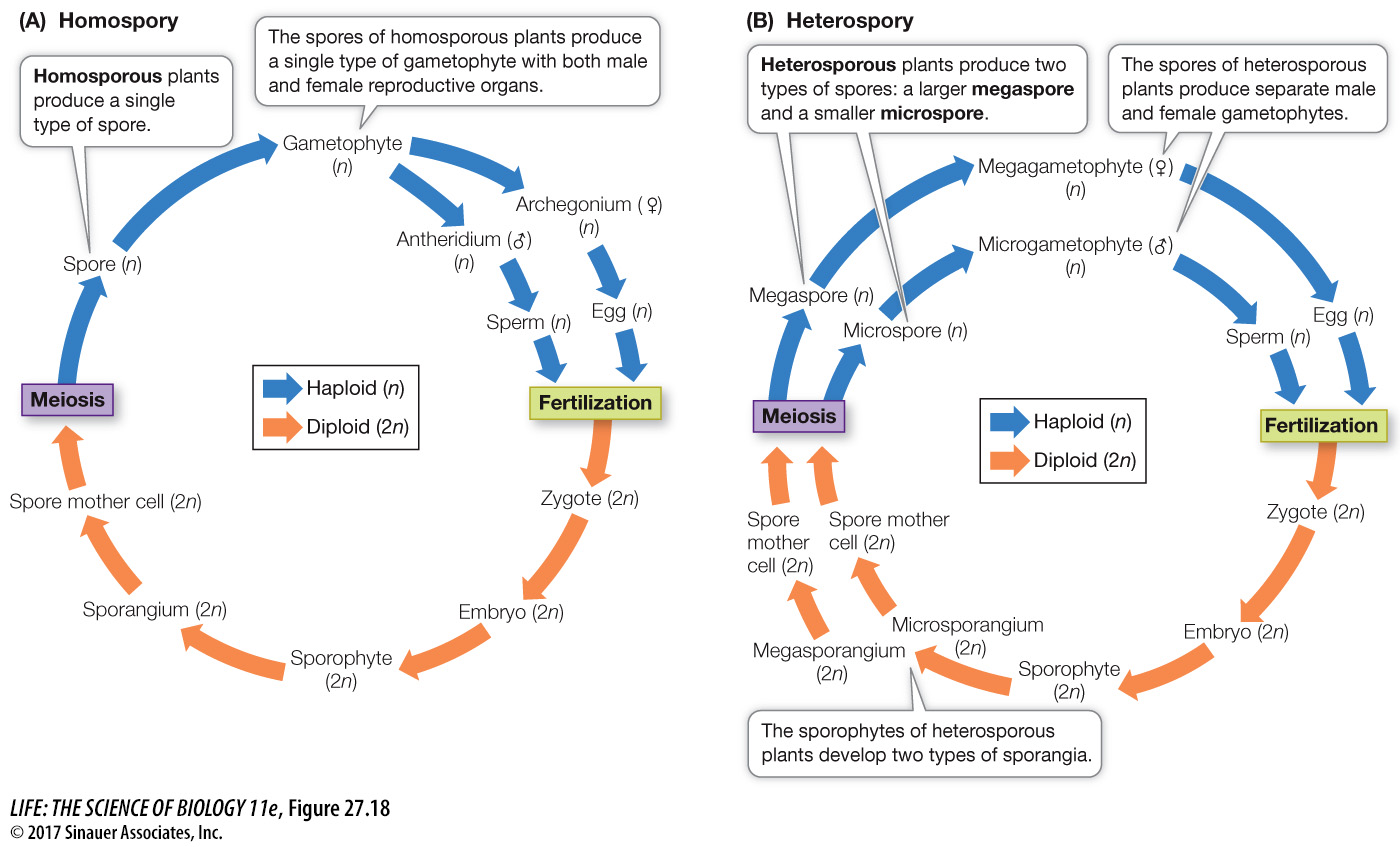Heterospory appeared among the vascular plants
In the lineages of present-day, seedless vascular plants that are most similar to their ancestors, the gametophyte and the sporophyte are independent, and both are usually photosynthetic. The spores produced by the sporophyte are of a single type and develop into a single type of gametophyte that bears both female and male reproductive organs (see Figure 27.15). Such plants, which bear a single type of spore, are said to be homosporous (Figure 27.18A).

Figure 27.18 Homospory and Heterospory (A) Homosporous plants bear a single type of spore. Each gametophyte has two types of sex organs, antheridia (male) and archegonia (female). (B) Heterosporous plants bear two types of spores that develop into distinctly male and female gametophytes.
Activity 27.3 Heterospory
Page 588
A system with two distinct types of spores evolved somewhat later. Plants of this type are said to be heterosporous (Figure 27.18B). In heterospory, one type of spore—the megaspore—develops into a specifically female gametophyte (a megagametophyte) that produces only eggs. The other type, the microspore, is smaller and develops into a male gametophyte (a microgametophyte) that produces only sperm. The sporophyte produces megaspores in small numbers in megasporangia and microspores in large numbers in microsporangia. Heterospory affects not only the spores and the gametophytes but also the sporophyte plant itself, which must develop two types of sporangia.
Page 589
The earliest vascular plants were all homosporous, but heterospory evidently evolved several times independently among later groups of vascular plants. The fact that heterospory evolved repeatedly suggests that it affords selective advantages. Subsequent evolution in the land plants featured ever greater specialization of the heterosporous condition.
All of the vascular plant groups we have discussed thus far disperse by means of spores. The embryos of these seedless vascular plants develop directly into sporophytes, which either survive or die, depending on environmental conditions. The spores of some seedless plants may remain dormant and viable for long periods, but the embryos of seedless plants are relatively unprotected. Greater protection of the embryo evolved in the seed plants, which we will consider in the next chapter.
